A brand’s name can merely signify the person behind the label, but often the most successful artisans wear their own name because of how truthfully their garments represent their identity. For Nicholas Daley, his cult-beloved London-based brand is the distillation of all of the influences that made him who he is. His Scottish mother (and the matriarchy of his family going back even further) instilled a love of knitting. His DJ father lives through the brand in its always-present Reggae Club motif. In all of Daley’s pieces, you encounter his commitment to the tactile; his invocations of Madras and different tartans coalesce in a singular and immediately recognizable aesthetic.
Last week, Daley launched a pair of Wallabees with the British footwear icon Clarks. We sat down with the designer to talk about the history that he brings to his brand generally, and the process of imbuing this major collaboration with the aesthetic and production that make his brand so special.
VMAN: What inspirations do you bring to your label?
ND: A lot of it is roots and culture. My roots, my ancestry. I feel it’s even more important now as a creative to be very outward in terms of multiculturalism and diversity. I think a lot of that is what I do, which I’ve always done, from a textile point of view, through to storytelling. And I feel that’s why it has connected as much as it has globally. I think authenticity is really important. My approach is always about telling an authentic story.
And then, if there is a partner, say the Met Gala, working with Leon Bridges, it was about telling his authentic story with my authentic story. All about black dandyism and sartorialism. It was cool to then be part of that moment, which is very historic, working with another great like Leon, who I’m a big fan of his music and his southern roots, and how he blends that in his style of music. Within my collections, my collaborations, and any special moments like the Met, it’s always about trying to tell an authentic story, which is sometimes quite hard to do.
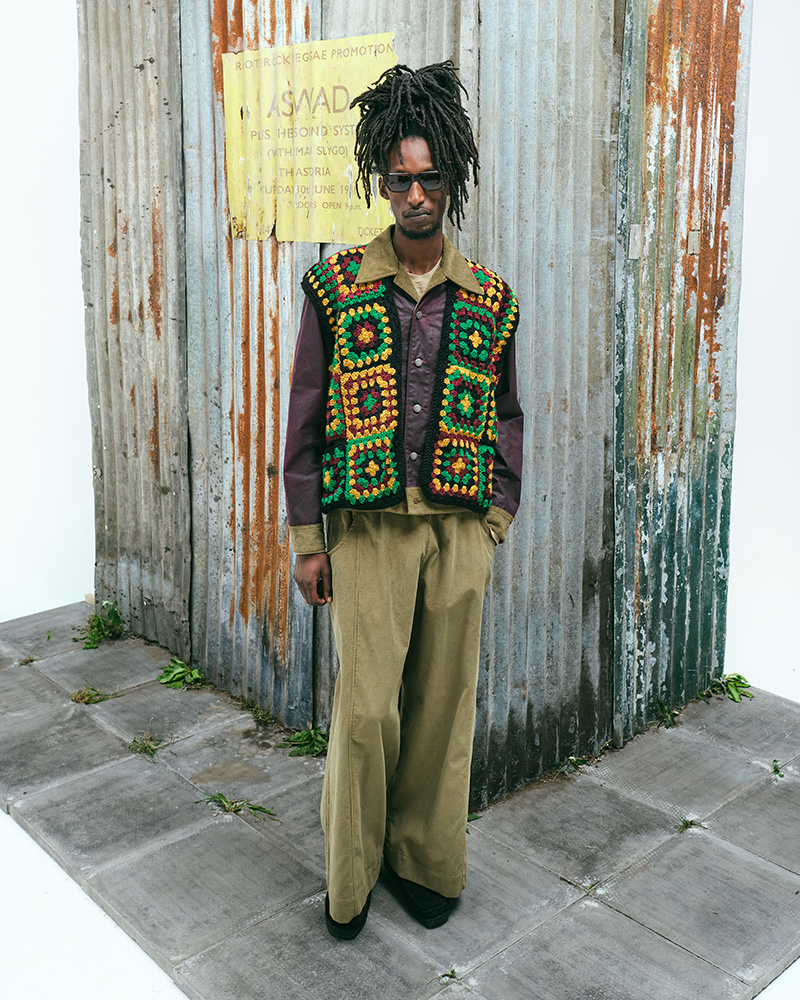
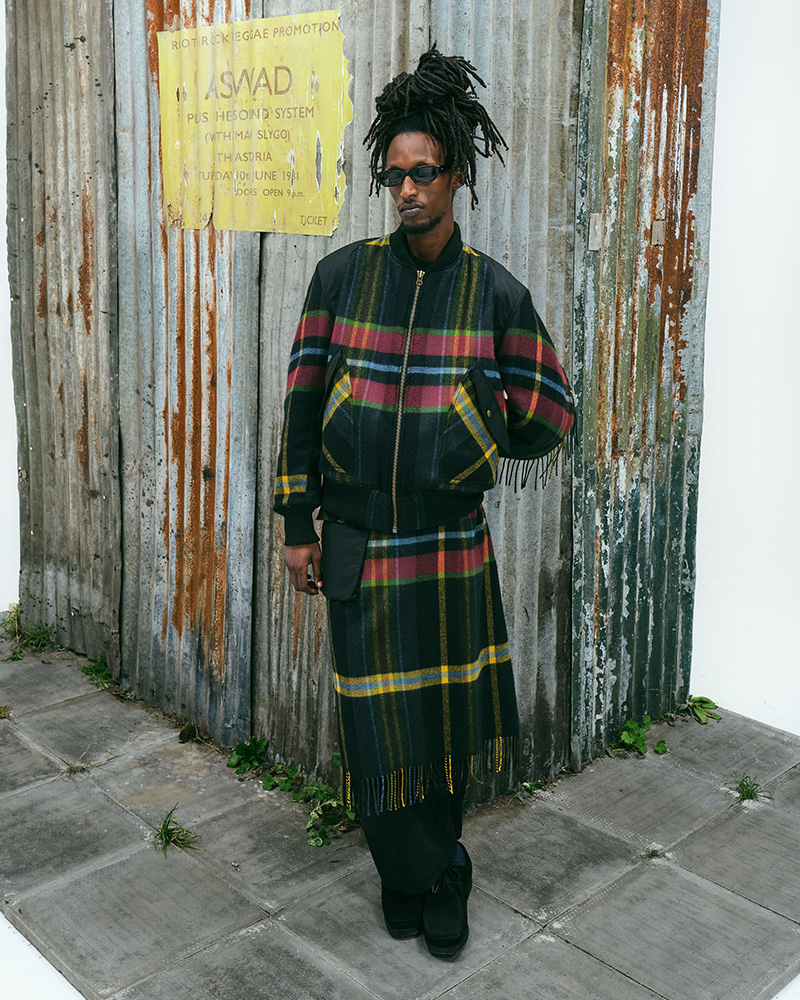
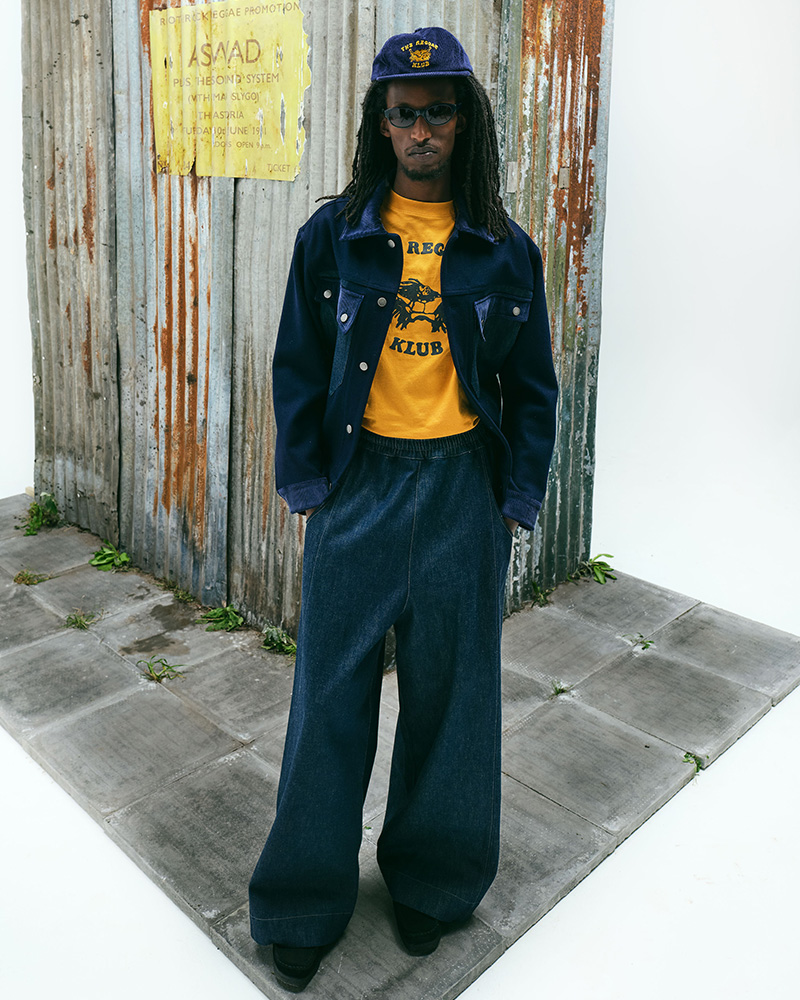
Nicholas Daley Autumn-Winter 2025 | Photography by Ethan & Tom
VMAN: How did your training at Central Saint Martins influence you?
ND: When I first started at Central Saint Martins was really when I spent four years of my life training, learning, doing internships at the fashion houses on Savile Row. So I guess my years at St. Martins were where I had explored and trained to gear up to understanding a design language, the cuts, the fabrics, the type of people I’d like to wear my clothes, where I’d like it to sit within spaces and retailers. I knew for myself I wanted to be there to try and push myself.
VMAN: Your mom works on all the knitwear?
ND: She calls herself the head of knitwear. To start with, she would make some one-off samples. Obviously, there’s a long history of women in Scotland, where my mum’s from, who are knitters. My mum, my grandma, my great grandma. Some of the first things my mum knitted for my dad, like that top in that photo—that boat neck. So that lineage and craft and ancestry is something I like to appreciate, and it’s always good to have a way to connect with your parents.
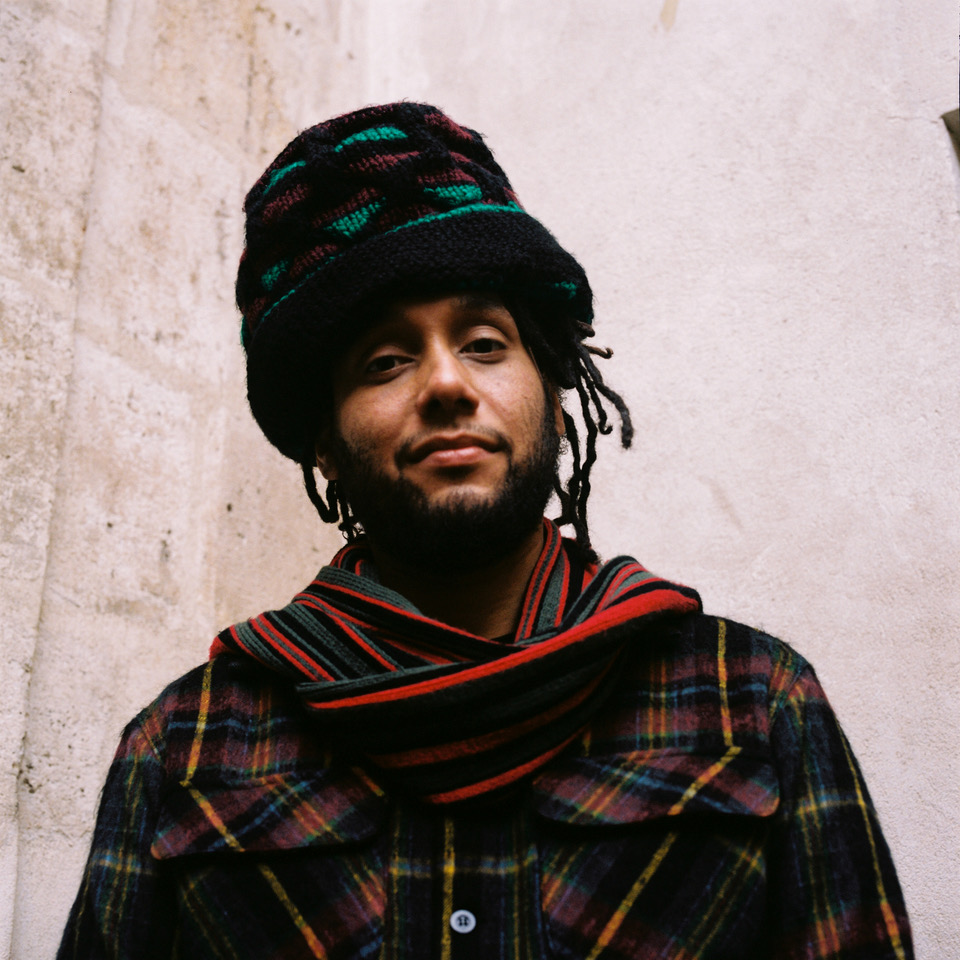
Courtesy of Samuel Paoli
VMAN: Can you tell me a little bit more about the influence of your dad’s music on wanting to start the brand and designing in general?
ND: Well, the Reggae Club motif is a key graphic for the brand. It’s just been there from the start, really, even from my very first collection, St. Martin’s working with Don Letts, who’s a music DJ, producer. So even from before I was selling a brand, that was something which I felt was important. And since then, it’s just been a really amazing journey, how I’ve managed to fuse two very big passions, the fashion element and the music element. Programming my own festival stages, working with some amazing artists, both from a stylistic point of view to a creative direction point of view. We’ve worked with different music charities raising funds for Tomorrow’s Warriors, a lot of the UK jazz musicians who are doing really well came from that program. It’s been an amazing thing, I definitely feel like my brand and how I’ve approached it has inspired a lot of other people in our industry to fuse these elements together in a more organic way. And you know, I’m married to a DJ. My mum married a DJ, my sister’s married a DJ. So everyone in our family pretty much are all married to or part of some sort of musical element, which is quite funny, but also cool.
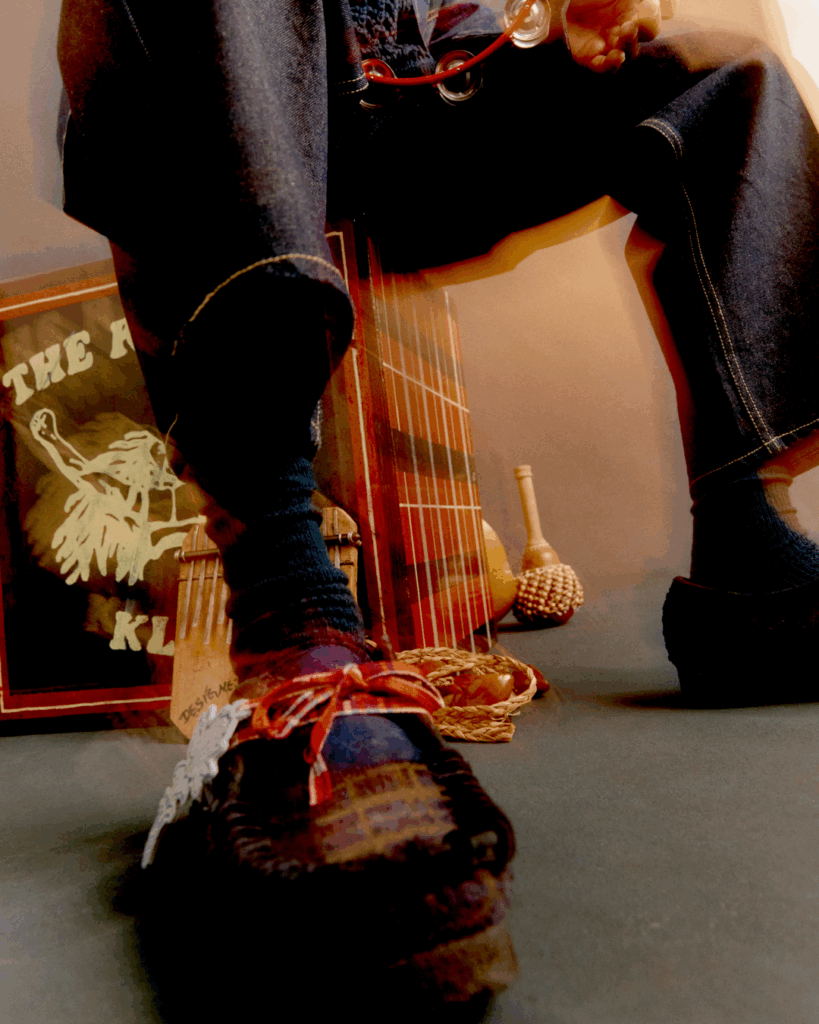
Courtesy of Nicholas Daley
VMAN: Can you tell me a bit about the design process behind your Clarks?
ND: Yeah, so this one honors the traditional fabrics from the Caribbean, with the Madras, the craft of all the whip stitching, the patchwork element, you’ve got three different types of fabrication, the suedes, the textured, waxed leather, as well as the grain. I wanted to produce the fabric in the region where this kind of exploration or connection with South Asia and the Caribbean started. So the laces were woven in Chennai, in India. And then we did the laser-etched top tartan of the Madras, and then the whip stitch on the front toe. And then we did a different pattern here on the back heel. And then more whip stitch on the back spine.
It’s turned out well, in terms of talking about the impact of Clarks. In my life. It was the first shoe I knew really, especially within the black community, whether it’s here in the US or in the UK. Going to church and funerals and birthday parties a lot of the time you would be wearing, ‘Oh my dad put me in a pair of Clarks shoes for it.’ So this one has felt quite special, just because of the personal connection. I just wanted to do something which I felt hadn’t really been seen.
Discover More





